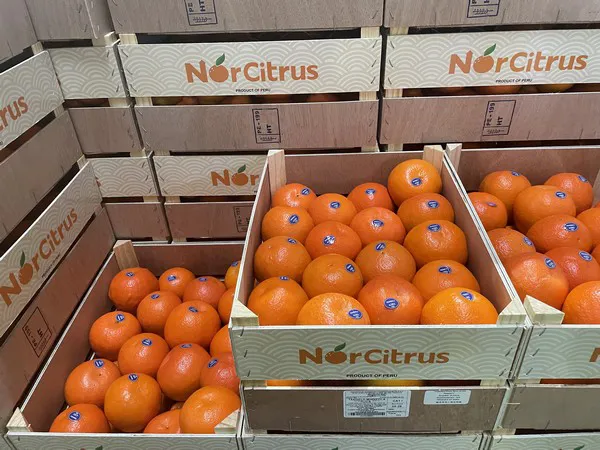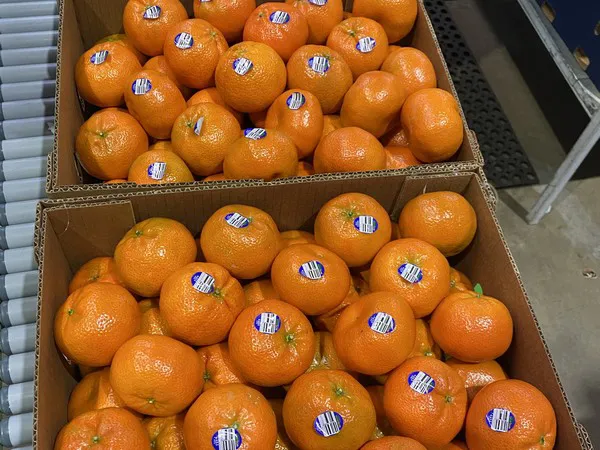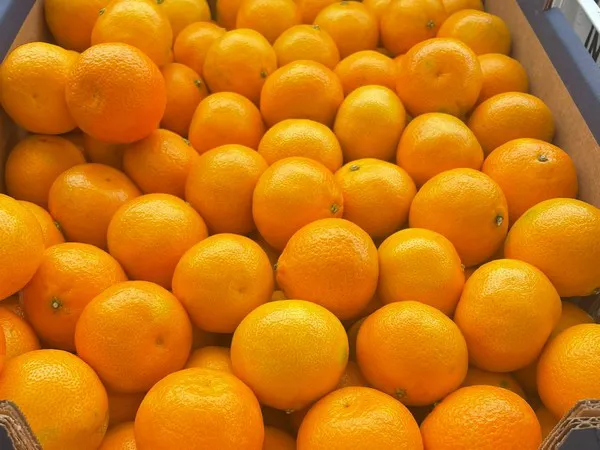Peru’s citrus is moving swiftly with some producers seeing a two week delay in starting the harvesting of Tango, satsumas and novas. According to Roberto Vargas, from Asesorias e Inversiones Muva S.A.C, they are looking to increase their market share in Canada, Europe and the UK.
“We started in week 13 with primosoles. We are currently finishing clementines and starting novas. Tangos should start in around two weeks. In clementines and primosoles the season has been normal. In satsumas and novas it has been delayed and we are looking at a two week delay in tango, which we usually start in week 22 or 23. However, we expect to cover our committed volume to programs for which having a consistent seven month supply helps.”

The delay is working in their favour, with fruit hanging a bit longer, contributing to better quality fruit. “Quality has again been very good this year, our customers have been very happy with the internal and external quality. We are very consistent with our arrivals. Peru has a very stable weather, along with very good logistics. This allows us to maintain our existing programs with quality and consistency year after year and build trust with our customers; they will receive a good quality product within the agreed timing.”
They have three companies within the group. Agricola Interandina, which grows mainly table grapes with the autumn crisp variety planted. Agricola Santa Azul which is a JV with Family Tree Farms and is all planted with MBO genetics’ blueberries and Muva, which is a citrus faming and export company says Vargas. He says in Muva they have a consistent supply of citrus that arrives in the northern hemisphere from mid-April to late October. Their varieties are in order of harvest: primosole, satsuma, clementines, nova, minneola, tango, w murcott and nadorcott.

Tango's
“We are growing mostly in clementines, which we harvest from weeks 17 to 22. We are also growing in Tango; we have a long window from week 22, starting in the northern high altitude valleys of Lima and Santa Rosa and then continue with Ica, which we will harvest until week 38. Another interesting good quality, condition and taste early variety is primosole, which we harvest from weeks 14 to 19. We are also expanding in autumn crisp grapes in which our harvest window is from week 48 to week two. We are growing mostly in areas with hot days and cooler nights that give us a good temperature differential between day and night. Along with low humidity this allows us to produce a premium mandarin with good internal and external quality,” says Vargas.
While shipping costs have reduced somewhat, the other production input costs are eating away at the margins of producers says Vargas. “Our main routes which are U.S. and Europe have always been stable even during the pandemic. Given the size of our operation and us being able to offer shipping lines consistent volume yearlong, with citrus, blueberries and grapes, we have not had shipping space issues. We did struggle with the huge increase in shipping costs the last two seasons, which for mandarin meant a big percentage of the return back to the farm was lost. Shipping costs are lower this year, but production costs continued increasing in the last three years.”

Clementine's
The U.S. remain Muva’s biggest market, but they are setting their sights on an emptier Europe market and Asia. “U.S.is our main market, we also have programs but are looking to increase our market share in Canada, Europe and the UK. We have stable programs in Latin America and Asia. Europe has been good at the start of the season given the early finish of Spain and Morocco. The U.S. has not been as good as last year because of California production that has been in the market longer than expected, but the movement has been ok. We do expect better demand and movement in June in the U.S.,” states Vargas.
For more information:
Roberto Vargas
Muva
Email: sales@agnorsur.com
www.norsur.pe
